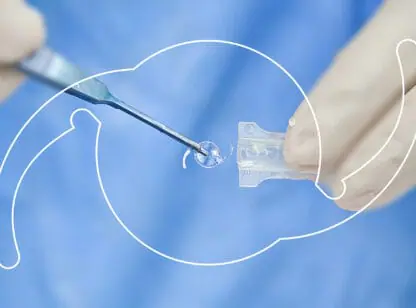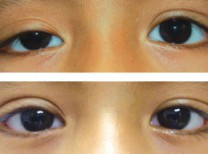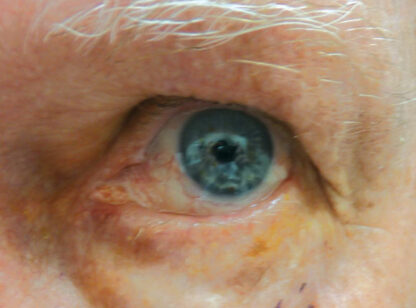Glaucoma is a disease of the optic nerve that if not treated can cause blindness. It affects 1 in 200 people under age 50, and 1 in 10 by age 80. Worldwide it is the second leading cause of vision loss behind cataracts.
A damaged optic nerve causes an irreversible loss of vision, so detecting this disease early is of the utmost importance. Luckily eye drops usually keep the disease under control, allowing most people to retain excellent vision and maintain a normal lifestyle.
There are 2 kinds of glaucoma – open angle and closed angle. Open angle is much more common. It slowly progresses and is usually asymptomatic until late in the disease process. Open angle glaucoma is usually treated with eye drops to lower the intraocular pressure and preserve the optic nerve. An intraocular pressure reading above 21 puts a person at risk of glaucoma, but pressure alone is not the defining factor. One person can have a high pressure and never develop optic nerve damage, and another person can develop low tension glaucoma with seemingly normal pressure below 20 which leads to severe damage.
Closed angle glaucoma occurs when the fluid in the eye is unable to drain causing the eye pressure to rise to very high levels (60 or higher). This can cause severe pain and vision loss. Treatment is a laser surgery to allow the fluid to drain. People at risk for this kind of glaucoma are advised not to use general over-the-counter cold and allergy medications as the ingredients can trigger an attack.
Most people diagnosed with glaucoma have the open angle variant. A challenging part of this disease is that patients cannot self-monitor their condition without an ophthalmologist to check their pressure and vision. During an exam the intraocular pressure will be measured and monitored to insure consistency. Fortunately, there are now daily drops (prostaglandin inhibitors) such as Lumigan, Travatan or Xalatan that help improve the outflow of the fluid in the eye.
Other exam considerations include peripheral vision because glaucoma will cause peripheral vision changes in specific patterns. Newer diagnostic mechanisms such as an ocular coherence tomography machine can measure the health of the nerve fiber layer and detect earlier changes, allowing more aggressive and earlier treatment.
Usually patients are prescribed 2 or 3 different eye drops before surgical intervention is considered for open angle glaucoma. One of the first surgical options considered is a laser surgery that has been shown to improve outflow of fluid from the eye. There are also incisional surgeries for patients that are not responsive enough to eye drops and/or show progressive loss of vision.
Compliance is one of the biggest issues in the treatment of glaucoma as taking eye drops regularly is not only a lifestyle burden, but a financial one. Education and diligence is critical in successfully treating this disease and for most patients, the prognosis is excellent.
Dr. Wallace Goldban is a board-certified ophthalmologist specializing in Lasik surgery and cataract removal. He has over 20 years of experience and is a graduate of the Albert Einstein College of Medicine. He has office locations in Palm Springs and Palm Desert and can be reached at 760.320.8497.













































Comments (0)